Local government reorganisation (LGR)
Getting it right for Devon
An interim plan and options appraisal for local government reorganisation in Devon
↓
Report of the Chief Executive
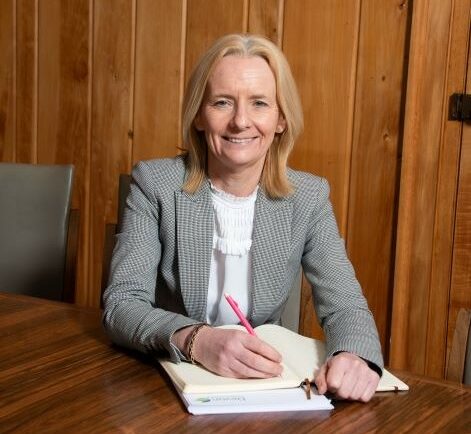
“Lorem ipsum dolor sit amet, consectetur adipiscing elit, sed do eiusmod tempor incididunt ut labore et dolore magna aliqua. Ut enim ad minim veniam, quis nostrud exercitation ullamco laboris nisi ut aliquip ex ea commodo consequat. Duis aute irure dolor in reprehenderit in voluptate velit esse cillum dolore eu fugiat nulla pariatur
↓
A proposal for the future of Devon
Taking an evidence-based approach to assessing the best options, listening to all and sharing information whilst future proofing our capacity to deliver high quality services for our residents
Executive summary
Identifing the most effective model, backed by robust financial analysis and engagement
Introduction
Making important decisions that will shape governance and services for future generations
Getting it right for Devon
Focussing on the challenges and opportunities that require careful consideration in Devon
↓
Preliminary LGR options
Potential new local government arrangements and how they align to the criteria set by the Government for this process
Identified LGR options
Option 1
A two unitary model for Plymouth and Devon
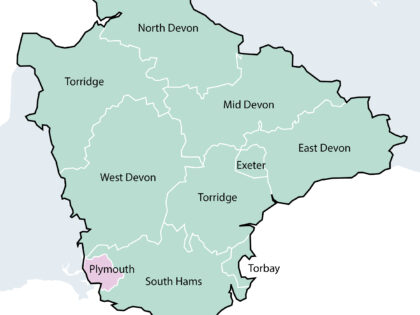
Option 2
A two unitary model based on North and South areas of Devon
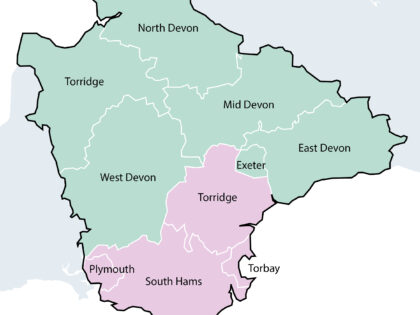
Option 3
A two unitary model based on South West Devon and North East Devon
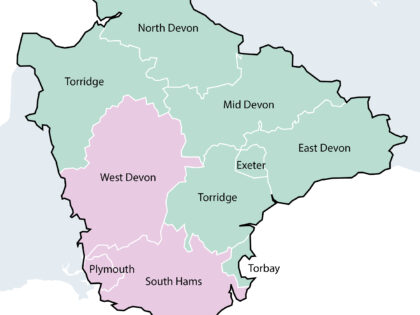
Option 4
A three unitary model of Plymouth, Greater Exeter and the rest of Devon
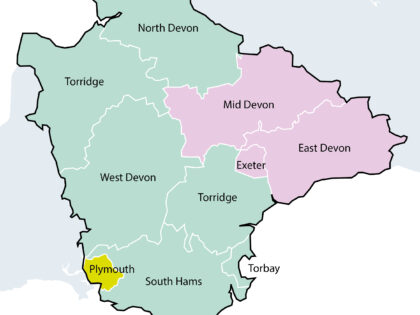
Option 5
A three unitary model of Plymouth, North East Devon and South West Devon
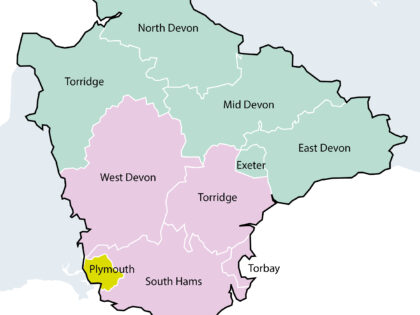
Baseline scenario
A unitary Devon authority – combining Devon County Council. Torbay Council and Plymouth City Councils’ administrative areas
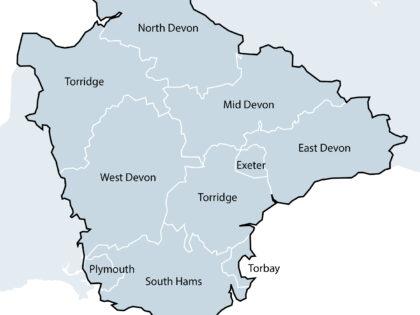
↓
What happens next
A more indepth review of potential options and oppotunities for Devon
The work we will do from April to November 2025
A thorough evaluation of potential options, their viability, financial resilience, associated risks, and opportunities.
Barriers and challenges
Lorem ipsum dolor sit amet, consectetur adipiscing eli
Transition planning and continuity of service delivery
Lorem ipsum dolor sit amet, consectetur adipiscing eli
↓
Appendix A – Our Devon
Understanding the context in Devon
- Our Devon
Devon is a great place to live and work with a good quality of life. Beautiful countryside, including two national parks, stunning coastlines, low crime rates, an abundance of heritage and culture, two historic cities, towns and villages, good schools and nationally recognised universities are just some of the many benefits enjoyed by our county. People feel a sense of connection to their place, and specifically to where they live, where many benefit from strong and thriving communities.
Devon sits at the heart of the South West, boasting a rich history, vibrant culture, and a diverse economy. The area is home to a world-renowned food and drink sector, a growing reputation as a global leader in environmental science, and—with its stunning landscapes—a well-earned status as a prime destination for visitors, learners, and investors alike, with 30 million tourist visits per year.
But the beauty of our county conceals major challenges we face both now and in the future; challenges that will simply increase in their scale over time. An ageing population will put huge pressure on public services whilst there are significant pockets of deprivation, low skills, low wages, and therefore there is a need for more opportunities, and improvements in public transport across the county which would help to reduce these impacts.
We face increased demand as younger adults with more complex needs represents 50% of the people we support. Ensuring sufficiency and resilience will become more challenging as demand continues to increase.
We face challenges in our natural environment including from climate change, such as erosion and flooding. We face challenges in providing opportunities for our young people and there has been sustained financial pressures on children’s services but with improving outcomes. There is a critical shortage of affordable housing across the county, and this is felt most keenly by younger generations, vulnerable families and public sector workers. We face challenges around creating the conditions for sustainable economic growth with many of our businesses reliant on seasonal tourism and agriculture, whilst Devon has lower economic productivity per head than many parts of the UK.
Our vision is for a Devon where everyone can reach their full potential and live healthy, safe, lives. For Devon to meet these challenges, local government must play its full part and engage with public sector reform.
- Geography and population of Devon
Devon has a mix of urban, coastal and rural characteristics. Its area is 2,590 square miles, it has dual coastlines extending approximately 435 miles, and a population density of just over 479 people per square mile, however this varies greatly across the county. According to the 2021 Rural Urban Classification, 33% of Devon’s population is classed as rural, compared with 17% nationally. 19% of the Devon population are also in rural areas distant from a major town or city (defined as no settlement with a population of 75,000+ within a 30-minute drive-time), compared to 6% nationally. This pattern also extends to the urban population with 19% of urban areas distant from a major town or city compared with 7% nationally. In terms of these major towns and cities, Devon has three sub-regional centres comprising 44% of the total population: Exeter, Plymouth and Torbay. These centres, together with fifteen further towns with over 10,000 population, mean that Devon has a mix of urban, coastal and rural characteristics.
Devon’s population of 1,241,629 is divided on the following existing local authority areas:
Authority area Population Devon County Council 833,408 Torbay Council 139,485 Plymouth City Council 268,736 Devon’s population grew by around by 4% or around 48,000 between 2018 and 2023, a faster rate than the average in England (3.2%). Such growth varies within the county. Eastern Devon has a fast-growing population, including of under 16s, whilst in some southern and western areas of Devon including Torbay and Plymouth the number of under 16s is declining.
Across all areas, Devon has an ageing population with 305,877 or 24.6% of the total population aged over 65. The average across England for those aged 65 or above is 18.7%. Between 2018 and 2023, Devon’s elderly population grew faster than other age groups in the county – 7.8% vs 3.6% for those aged 16-64 and an increase of 0.3% for those under 15. Over the same period, Devon’s ageing population grew faster than the average in England of 6.9%. Almost all of its projected population growth is of elderly persons outside the working age population. Longer- term population growth between 1981 and 2023 in Devon (25.3%) exceeded national growth (20.7%), and projected growth between 2023 and 2043 is expected to be higher in Devon (12.8%) than national growth (9.2%).
According to the 2021 Census, Devon is much less ethnically diverse than most areas of England with particularly low proportions of Asian (1.6% vs 9.6%) and Black (0.5% vs 4.2%) ethnic groups compared to England.
- Wider Population Characteristics
Health, care and wellbeing
Within the One Devon Integrated Care system our priority target population cohort for health inequalities covers those living in areas in the 20% most deprived neighbourhoods nationally; individuals, families and communities experiencing rural and coastal deprivation; individuals, more vulnerable communities including homeless persons, migrants and those experiencing domestic abuse; and persons with severe mental illness and learning disability and neurodivergent conditions. Socio-economic deprivation is the strongest predictor of health outcomes and Devon has both hotspots of urban deprivation with the highest overall levels within Plymouth, Torbay and Ilfracombe, with hotspots in other urban centres including Exeter and Barnstaple.
Many rural and coastal areas, particularly in North and West Devon experience higher levels of deprivation, impacted by low wages and a high cost of living. Average life expectancy and healthy life expectancy (the number of years someone can expect to live in good health) are both much lower in more deprived communities. Within Devon there is a 15- year gap in average life expectancy (Central Ilfracombe at 75 years vs Exmouth Liverton at 90 years) and a 20-year gap in average healthy life expectancy (Plymouth Devonport at 52 years vs Exe Estuary at 72 years). A larger gap for healthy life expectancy means people in poorer communities spend more years of their life in poor health as well as dying younger.
Devon has much lower mental health outcomes than the national average. A wide range of indicators from the Public Health Outcomes Framework highlight poorer mental health outcomes in the Devon area including higher suicide rates, self-harm admission rates, lower employment rates for people with mental health conditions, and lower levels of access to and usage of services. This pattern is reflected across the South-West Peninsula, where rural and coastal deprivation also contribute to mental health and wellbeing.
In relation to health and care activity within Devon during 2023/24 there were:
- 398,345 admissions to hospital
- 9,308 births
- 1,727 admissions to care homes
- 11,493 adults receiving long-term community social care support
- 2,529 carers receiving carer specific services
- 7,507 children in need (needing help and protection due to risks to development/health)
- 1,686 looked after children
- 1,230 child protection plans
- Key economic indicators
Devon is an area with a strongly recognised external inward investment and visitor identity and brand. Its people identify strongly with both their local towns, cities and villages and with the wider county. It has an economy worth £31.4bn, the size of Manchester and larger than the economies of Edinburgh and Bristol.
Devon’s economy is shaped by its coastlines, protected landscape, national parks, a large rural and agricultural area and a broadly spread and diverse manufacturing base across the county. The city of Exeter has a large travel to work area, which recognises the symbiotic relationship between the city and its hinterland, it is the most common destination by rail from areas up to 30 miles in all directions driven by commuting, education and retail. The city of Plymouth also has a strong influence upon its hinterland, but overall its impact is more concentrated within the city itself.
Devon has almost 50,000 VAT registered businesses providing over 500,000 jobs and grew at 21.4% between 2019 and 2022, making it a faster growing area than Cornwall, Bristol, Oxfordshire, Cambridgeshire, Berkshire, Milton Keynes, the City of London and Camden and Essex Thames Gateway.
Key economic hubs of note include Devonport Naval Base in Plymouth (the largest naval base in Western Europe), the Met Office based in Exeter and Exeter Science Park and Skypark, the Universities of Exeter and Plymouth, the Rothamsted Institute (agricultural and land research) near Okehampton, Appledore as well multiple sites within the Plymouth and South Devon Freeport in Plymouth and its hinterland, focused around the marine and clean energy sectors, as well as defence.
Devon has a wealth of opportunities in terms of its offshore energy resource in the Celtic Sea off Northern Devon (one of the UK’s largest offshore renewable energy resources) and the second largest Tungsten deposit globally at Hemerdon in the South Hams, forming part of the UK’s critical minerals resource. It also has strong advanced manufacturing, digital and creative, agricultural, agritech, fishing and tourism sectors, with tourism attracting almost 30 million visits and supporting over £3.3bn of visitor spend annually.
Rural, urban and the coastal areas of Devon suffer from nationally significant levels of poverty, with parts of North Devon, Torbay and Plymouth amongst the 10% most deprived areas of England, and West Devon, Torridge and Torbay having among the lowest workplace-based wages of any authority in the country and with life expectancy in Ilfracombe among the lowest in the UK.
Nonetheless in most areas unemployment is below the national average, with productivity and earnings levels being of more concern. Social mobility and youth aspiration and progression are particular areas of concern, with around 40% of all young people leaving the area due to a lack of available housing and lack of attractive employment opportunities in many communities. The area faces significant challenges with skills and educational performance, with pockets of nationally significant educational need and some of the lowest Level 4 achievement rates in the country across its urban, rural and coastal areas.
- Environment
Devon’s stunning landscape, with its rolling hills, dramatic coast and winding rivers, has long been a source of inspiration. The county’s natural beauty, historic, cultural, and ecological significance is reflected by its two National Parks (Dartmoor and Exmoor), five National Landscapes, two World Heritage Sites and the North Devon Biosphere Reserve.
The county’s mix of habitats, such as its iconic hedgerows, ancient woodlands, orchards, heathlands, and parkland, supports internationally important populations of species, such as the European dormouse, European eel and greater horseshoe bat, and species that are not found anywhere else in the world, including the Lundy cabbage flea beetle.
Devon’s coasts are home to diverse marine life, from nationally scarce pink sea fans to seals, dolphins, tuna and even whales becoming more frequent. The county is home to 15 Marine Conservation Zones, and the North Devon World Surfing Reserve recognises the area’s outstanding coastal environment. Of Devon’s 66 monitored bathing waters, 82% rated as ‘Excellent’ and 13% as ‘Good’.
Devon’s historic environment is equally remarkable, with a rich and distinctive tapestry of archaeological sites, historic buildings, towns, villages, and ancient landscapes. The county is notable for the density and quality of this heritage, with the Historic Environment Record referencing some 111,000 sites of interest, ranging in date from the Ice Age to the Cold War.
This includes nearly 1,700 nationally important Scheduled Monuments (over 5% of the English total), 21,600 Listed Buildings, 50 Registered Historic Parks & Gardens, and 10 Protected Wrecks. However, over 500 of these assets are on the national Heritage at Risk Register. The value of Exeter’s Roman and medieval heritage is recognised in the designation of the walled city as one of only six Areas of Archaeological Importance in England. Dartmoor is one of the most important archaeological landscapes in Britain, with its numerous prehistoric stone rows, circles, burial cairns, settlements and field systems. While the international significance of the industrial heritage of the Tamar Valley is reflected in its World Heritage Site status.
However, Devon faces several environmental challenges. Many habitats are fragmented and threatened by pollution, invasive species, and climate change, which have contributed to huge losses of wildlife and habitat over the last century. Only 21% of Devon’s rivers achieve good ecological condition and all fail on chemical pollution. Additionally, many of Devon’s Sites of Special Scientific Interest (SSSIs) require improvement, as only 28% meet favourable condition. The steep topography leads to in excess of 40,000 properties being at risk of flooding from surface water. The county is unique in having two coastlines adding further risk from tidal flooding, as well as coastal erosion. With more frequent high-intensity rainfall events, hotter summers, warmer winters and continuing sea level rise, the impacts of climate change are being realised.
Greenhouse gas emissions are declining – 25% below 2010 levels – but not quickly enough to meet national targets. Per capita, annual greenhouse gas emissions are particularly high in the north and west of the county (about 9 tonnes) due to more reliance on private motorised transport, greater agricultural activity and more homes off the gas network in these areas due to their rural geography. This compares with 5.2 tonnes as the Southwest average, and just over 3 tonnes in Exeter.
Devon’s environment is a vital asset for health and well-being, providing residents with important access to high-quality, wildlife and heritage-rich green spaces that support physical and mental wellness. It also serves as an outdoor classroom for our children, offering invaluable opportunities for learning and connection with nature. As the heart of the county’s tourism industry, it attracts visitors while offering diverse recreational opportunities and enriching cultural heritage. With ongoing conservation and recovery efforts, this exceptional landscape can continue to be restored and thrive, ensuring its benefits for both residents and visitors for generations to come.
- Planning and transport
Devon has a number of major national transport links including the M5 motorway and mainline rail links to London, Bristol and the Midlands. However, transport connectivity varies significantly across the County. Areas around Exeter, Plymouth and Torbay have relatively good road and rail and higher frequency public transport, while areas of south, west and northern Devon have poorer transport links and travel choices.
The greatest opportunities to expand active travel networks are in Devon’s major growth areas. Cycling and walking infrastructure plans will enable developer contributions and new routes to promote active, healthier short-distance journeys for work, education, and leisure. In rural areas, ambitious plans for multi-use trail networks, building on successful trails like the Exe Estuary and Tarka Trail will support the local economy and be attractive to people walking, wheeling, cycling, and, where possible horse riding.
Bus is the most used form of public transport in Devon and Torbay, with 25 million passenger trips during 2023-24. Although bus usage was 15% higher before the pandemic, it is recovering. Physical and technology-based priority measures in economic centres like Exeter, Newton Abbot, and Barnstaple will improve bus reliability and journey times, including routes serving the market and coastal towns. Electric buses on ‘showcase’ routes in northern Devon, Exeter, Cranbrook and between Torbay Newton Abbot will further increase the bus passenger quality offer.
Significant investment has been made to create a railway resilient to the impacts of climate change, particularly between Dawlish and Teignmouth. Rail usage in Devon and Torbay is 50% higher than in 2010, which has led to capacity issues at peak times on some rail lines. Newer trains have been announced for the Dartmoor Line and North Devon Line, which will address overcrowding, improve comfort for passengers and deliver better rail performance. A new railway and three new ‘Devon Metro’ stations have been introduced in the Exeter area with Okehampton Interchange under construction and Edginswell and Cullompton planned.
Rural accessibility challenges means many Devon residents remain reliant on their cars. Travel choices have been improved with integrated bus and rail initiatives connecting communities like Lynton, Lynmouth, Combe Martin, Ilfracombe, Tavistock, and Salcombe to ‘hub’ rail stations in Barnstaple, Okehampton, and Totnes. The new Okehampton Interchange will also serve as a bus and rail hub for rural communities in West Devon, Torridge, and parts of Cornwall.
Road improvements have focused on the most economically significant routes. The M5 between Cullompton and Exeter suffers from performance issues at peak and seasonal times, risking economic growth plans and connectivity to the rest of the County and region. Investment on local roads is targeted at better connecting communities to the major road corridors and where it can unlock growth opportunities. Notable projects include the North Devon Link, A382 in Newton Abbot, Cullompton Town Centre Relief Road, Dinan Way in Exmouth, and the Spine Road at Plymouth and South Devon Freeport.
- Housing
While the cost of a home in Devon is similar to the England average (£286,800 vs £290,000 in 2023), its residents earn considerably less (£31,800 vs £35,100 in 2023), leading to a higher average full-time salary to house price ratio (9.0 vs 8.3). Rental affordability in the South West region than is less than anywhere else in the country outside of London and the South East. The high costs of buying and renting homes, as well as a shortage of both social and private rented accommodation in rural and coastal areas, is impacting on the social and economic viability of Devon communities. Lack of access to affordable homes in rural areas means people are unable to remain in the area.
Measures of housing quality in Devon also reveal challenges in Devon, partly relating to the age of the housing stock. A total of 43% of the Devon population is in the most deprived 20% of areas nationally for the measure, and 69% is above the national average. Further to this, levels of fuel poverty in Devon are higher, with 14.3% of households classed as ‘fuel poor’ vs 13.1% for England.
According to Local Authority Housing Statistics for 2022-23, there were 585,723 dwellings in Devon. There were 11,985 local authority-owned dwellings in Devon, concentrated in East Devon (4,159), Exeter (4,805), and Mid Devon (2,969). Further to this, 58,464 dwellings were owned by a private registered social housing provider, and 1,754 were owned elsewhere in the public sector. A total of 30,038 households were on the housing waiting list.
There are significant areas of growth around the new communities of Cranbrook in East Devon and Sherford in the South Hams, which is near Plymouth, as well as adjacent to South West Exeter in Teignbridge, with aspirations for further growth in other selected locations. Across Devon and Plymouth housing completions are below the national average. There are also issues across Devon related to the affordability of housing, which has knock-on impacts to local labour markets.
- Current Governance/Structures/Staffing
The current distribution of service responsibilities between the county and district councils dates to the 1974 reorganisation of local government. There is one county council and eight district councils. The unitary authorities of Plymouth City Council and Torbay Council were created in 1998.
The Devon and Torbay Combined County Authority involving the authorities within Devon and Torbay, but not Plymouth, is a recent construct which met for the first time on 19 March, 2025. But while the needs of the county’s communities have changed dramatically in the past decades, the model of local democracy has been unchanged for 50 years.
Governance in Devon
In total there are 481 elected members across the 11 councils in Devon. The breakdown of councillors across existing local government structures is as follows:
- Devon County Council – 60 There are 58 electoral divisions of which 56 have one member, and two divisions have two members.
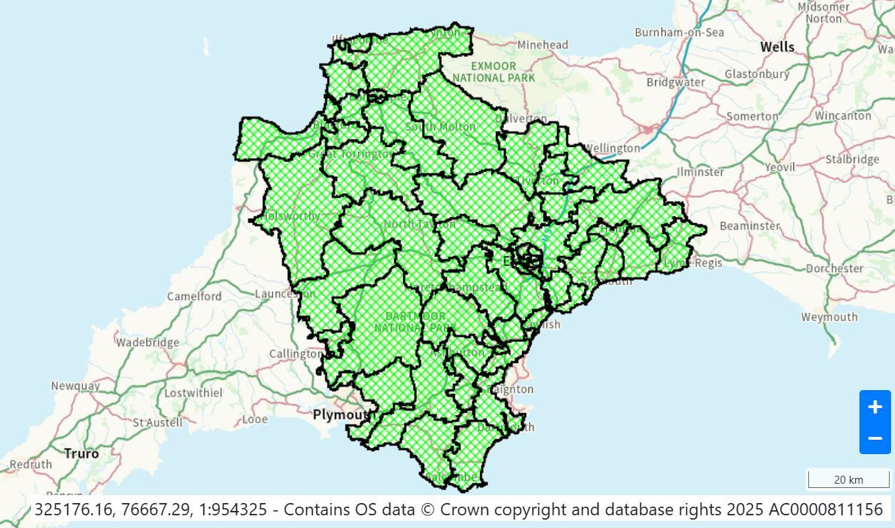
- Torbay Council – 36 There are 16 wards of which five have three members; 10 have two members and one has one member.
Map of Torbay wards https://www.torbay.gov.uk/council/voting-and-elections/wards
- Plymouth City Council – 57 There are 20 wards of which 17 are represented by three councillors.
Map of Plymouth wards https://www.plymouth.gov.uk/sites/default/files/2024-05/Councillor- Ward-Map-May-2024.pdf
The breakdown of members across all councils is as follows:
District Number of members Number of wards East Devon 60 30 Exeter 39 13 Mid Devon 42 22 North Devon 42 25 South Hams 31 20 Teignbridge 47 24 Torridge 36 23 West Devon 31 18 TOTAL 328 175 Council Number of members Number of wards Plymouth CC 57 20 Torbay C 36 16 Devon CC 60 58 Other Governance
In Devon, there are over 400 parish and town councils, which vary greatly in size and the council tax they raise, and hence in the range of activity they undertake including the level of their precept.
Not all areas within Devon are parished. These include Exeter and Paignton and Torquay in the Torbay Council area.

There is a national park authority covering Dartmoor, created in 1997, which is the planning authority responsible for the unique environment and characteristics of the area. The Dartmoor National Park Authority area covers 350 square miles, with around 34,000 people living within its boundaries.
A total of 29% of the area covered by Exmoor National Park lies in north Devon, with the rest in Somerset.
Staffing
The 11 councils in Devon employ some 12,600 staff on the following basis:
Authority Staff Numbers Devon CC 5,260 (as at end of November 2024) East Devon 540 Exeter 799 Mid Devon 546 North Devon 400 South Hams 570 (combined with West Devon) Teignbridge 700 Torridge 299 West Devon 570 (combined with South Hams) Plymouth CC 2,517 Torbay Council 1,022 Total 12,653 Budgets of Devon councils
The total net revenue spend budgeted across the 11 Devon councils was £2.07bn in 2024/25, the last year for which published, standardised data is available. The two largest elements of spend are employee costs and third party spend.
Funding of this £2.07bn net expenditure comprises £1.256bn from a range of government grants, retained business rates, and planned use of authority reserves. A total of £811m (39%) is raised through council tax precepts.
All 11 Devon councils face significant financial challenges to varying extents. The combined budget gap – the difference between estimated costs and funding – of Devon authorities is projected to increase year on year. The medium-term financial projections published by each authority vary, covering periods of between 2 and 5 years. Extrapolating available information indicates a potential projected funding gap of £180m by 2028/29.
The key financial risks more generally are:
- Demand and cost pressures particularly in adult social care, children and families, special educational needs and disabilities, home to school transport, homelessness/temporary accommodation, and national policy changes relating to these areas.
- Inflationary pressures driven by general inflation, national living wage growth, employment taxation, and supplier market sufficiency challenges.
- Dedicated Schools Grant High Needs Block (SEND) deficits, which cumulatively stands at £125m in Devon (DCC plus Plymouth and Torbay) as at March 2024.
- Changes in core spending power following the 2025 Comprehensive Spending Review, local government funding reform and the delayed business rates retention reset.
- Funding required for infrastructure arising from population growth, with linked considerations around borrowing capacity and debt.
Council tax
The combined council tax precepts of the 11 Devon authorities in 2024/25 total £811m. A further £25.6m is raised by town and parish councils across Devon.
The following table summarises the 2024/25 tax base and tax rate information for each billing area. It shows that in the current two-tier system the tax rates for county plus district authorities range from £1,882.45 (East Devon) to £1,977.26 (West Devon). Plymouth and Torbay unitaries are lower at £1,840.69 and 1,858.67 respectively.
Region Number of Dwellings Tax Base Band D Equivalents Tax Base ÷ Dwellings County / Unitary Band D Rate £ District Band D Rate £ Combined Band D Rate £ Devon CC 398,021 305,405 76.7% 1,715.67 – – East Devon 74,747 62,447 83.5% 1,715.67 166.78 1,882.45 Exeter 61,221 39,045 63.8% 1,715.67 180.37 1,896.04 Mid Devon 38,466 30,222 78.6% 1,715.67 232.16 1,947.83 North Devon 49,109 35,433 72.2% 1,715.67 210.39 1,926.06 South Hams 47,476 40,529 85.4% 1,715.67 190.96 1,906.63 Teignbridge 65,355 50,939 77.9% 1,715.67 196.41 1,912.08 Torridge 34,321 25,277 73.6% 1,715.67 189.50 1,905.17 West Devon 27,326 21,512 78.7% 1,715.67 261.59 1,977.26 Plymouth 123,273 75,389 61.2% 1,840.69 – 1,840.69 Torbay 68,736 47,374 68.9% 1,858.67 – 1,858.67 Totals 590,030 428,168 Other public services in Devon
In the two-tier area of Devon, different types of councils are responsible for providing various services on behalf of their residents. From a delivery perspective this has an impact on how local government works with its key public sector partners in the county. The partners must each interact with representatives from all councils to ensure a consistent service experience is offered to the county’s residents and businesses. Similarly, the 11 councils must build individual relationships with these key public partners.
The range of partnerships across the county and the sub-region clearly demonstrate a commitment to cross organisation working. However, the breadth and complexity of the networks that exist also highlights the sheer amount of work and relationship management that is needed to make these arrangements a success in a two-tier area.
The following all operate at county, sub-regional or regional level:
NHS Devon is the organisation responsible for most of the county’s NHS budget and develops a plan to improve people’s health and deliver care services. NHS Devon is one of 42 integrated care boards across the country and took over the statutory functions of clinical commissioning groups (CCGs) on 1 July 2022.
The One Devon Partnership, formerly known as the Integrated Care Partnership, is a new committee that includes a range of organisations, including councils across Devon, to drive integration by producing a strategy to join-up services, reduce inequalities, and improve people’s wellbeing, outcomes and experiences. The partnership works closely with the county’s three health and wellbeing boards in developing the strategy. The partnership also works with and involves a wide range of other partners and sectors including primary care, carers, public health, housing and education.
Devon & Cornwall Police is accountable to the Police and Crime Commissioner for the Devon and Cornwall area and is responsible for crime prevention and enforcement across the whole of Devon, as well as the unitary council areas of Plymouth and Torbay. The force and Commissioner are important partners to the councils and, in addition to community safety roles, the force is an active member of the Joint Civil Contingencies Partnership. The police and Commissioner have been keen proponents of the benefits of working with other forces to increase scale economies and recognise the value of collaboration.
The Devon & Somerset Fire & Rescue Service is responsible for providing emergency response and fire prevention across the whole of Devon. The service was created through a merger in 2007 to deliver economies of scale to protect local service delivery across the two rural counties.
The Southwestern Ambulance Service NHS Foundation Trust is responsible for ambulance services across the whole Southwest region. This includes Devon, Somerset, the Isles of Scilly, Cornwall, Bristol, Gloucestershire, Dorset and Wiltshire.
In addition, the councils and public partners have developed successful local partnerships around important themes, in line with both national and local drivers. These strategic partnership arrangements are firmly embedded on a pan-Devon geography and demonstrate the value of collaboration.
- Local partnership working
Partnership working across Devon, between all local authorities, and with other parts of the public sector, community and business, is extensive, and a strong basis to work together towards local government re-organisation. Here we outline a range of the main current partnership arrangements:
- One Devon Integrated Care Board, a focus of collaboration between the NHS, all local authorities and community and voluntary partners, working to make the health system as strong and effective as possible.
- Health and Wellbeing Boards for Devon, Plymouth and Torbay – these bring together leaders from the local health and care system, and councils, to look at people’s health and social care needs as a single issue.
- Team Devon, which brings the county council, district councils, national park authorities and the Devon Association of Local Councils together to enable a joint approach to common issues and shared challenges, such as the housing crisis, accommodation for children in care, homelessness, financial vulnerability and water This informal partnership will be replaced from May 2025 by a formal Team Devon Joint Committee.
- Joint Civil Contingencies Partnership are responsible for providing the combined front- line local authority response to an The county council leads the partnership and has a duty civil contingencies officer arrangement in place providing cover seven days a week. Each of the 11 councils has a separate civil contingencies officer to manage the response of their own organisation.
- Safer Devon Partnership – this is the statutory partnership required under the Crime and Disorder Act and pulls together county, district and regional arrangements to oversee community safety across the county.
- Devon Safeguarding Children Partnership – this brings together key statutory partners including the voluntary sector and representatives of children’s voices to ensure that Devon children and young people are safeguarded and enabled to thrive.
- Torbay and Devon Safeguarding Adults Partnership provides strategic leadership for adult safeguarding across Torbay and Devon.
- The Peninsula Sub-National Transport Board, which the County Council is a member
- Trading standards, TS Connect, is commissioned jointly by Devon County Council, Torbay Council, Plymouth City Council and Somerset Council.
- Adopt South West, a regional adoption agency, was set up in 2018, and involving Somerset and Devon County Councils and Plymouth and Torbay Councils as partners.
- Inshore Fisheries Conservation Authority
- Devon and Torbay One Public Estate Partnership
- Devon Climate Emergency Partnership
This is not intended as an exhaustive list, and we will consider the alignment of partnerships as part of the further development of options for reorganisation.
- Devolution arrangements and strategic joint working
Team Devon is a partnership of local authorities, the county, districts and Torbay, with our partners and key stakeholders, working together to tackle shared challenges and seize opportunities for our communities. By collaborating, we align strategies, optimise resources and deliver services more effectively to improve the lives of residents and support local businesses.
Together, we have made significant progress in areas such as economic development, infrastructure planning, and public service delivery. By pooling expertise and resources, we have been able to coordinate responses to major challenges, ensuring that our region benefits from a joined-up approach. This has strengthened our ability to advocate for Devon and Torbay at the national level and attract investment into our communities.
Building on this strong foundation, with the Government’s support, we have now established the Devon and Torbay Combined County Authority to take greater control of our region’s future. A key ambition of the Combined County Authority is to maximise economic potential and support local businesses. Despite having nearly 50,000 businesses providing around 473,000 jobs, our region’s productivity remains below the UK average. To close this gap, we will focus on developing a skilled workforce, securing new investment, and ensuring that education and training align with local industry needs. Devolving adult education functions will help us better equip people with the skills needed to access high-value jobs, strengthening our economy for the long term.
Supporting businesses is at the heart of our plans. Through the Combined County Authority, we will deliver investment with strong local democratic accountability, provide a clear and influential voice for businesses and skills representatives, and make it easier for businesses to access advice and support. By backing high-growth sectors alongside our region’s traditional strengths, we aim to create a more productive, sustainable, and higher-wage economy that benefits everyone.
By working together through the Devon and Torbay Combined County Authority, we are creating a stronger, more prosperous future. We are committed to driving economic growth, improving infrastructure, supporting businesses, and ensuring that local people and communities have a real say in decisions that affect them. This is a vital step towards securing more investment, creating better jobs, and delivering lasting improvements for Devon and Torbay.
Building on our work to date, we are continuing discussions towards establishing a Mayoral Strategic Authority across the whole of Devon and, potentially, with Cornwall, if they choose to join us.